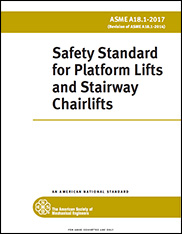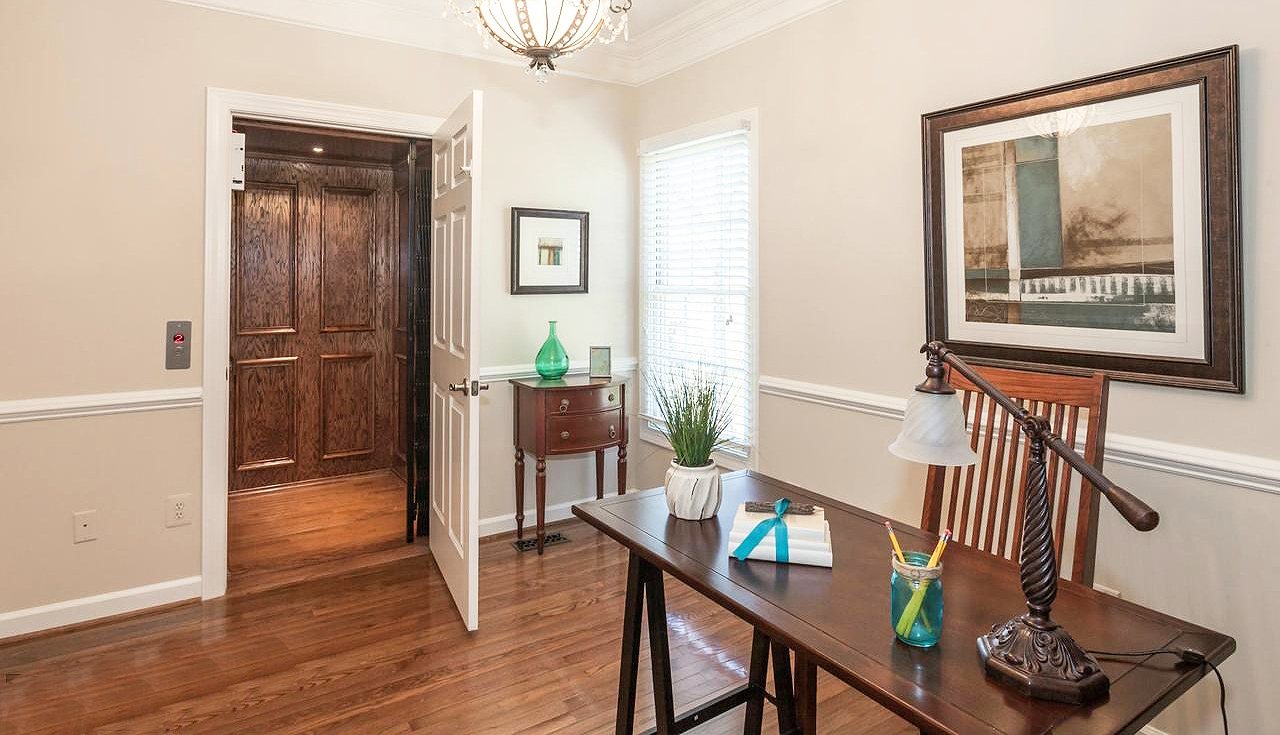- Violation Code EViolationDesc ASME1996 ASME2000 E109b Electric elevator: Inside of Car: Power closing of doors or gates Power Closing of Gates and Doors A17.1: 1001.2(a)(9) 8.11.2.1.1(i).
- ASME A17.1-2016/CSA B44-16 (Revision of ASME A17.1-2013/CSA B44-13) Safety Code for Elevators and Escalators Includes Requirements for Elevators, Escalators, Dumbwaiters, Moving Walks, Material Lifts, and Dumbwaiters With Automatic Transfer Devices AN AMERICAN NATIONAL STANDARD.
- Elevator Code Requirements. ASME A17.1-2019 / CSA B44-19 ‘Safety Code for Elevators and Escalators’: 2.27.1 Car Emergency Signaling Devices. 2.27.1.1 Emergency Communications The two-way communications (RATH® SmartPhones) shall conform to 2.27.1.1.1 through 2.27.1.1.6. 2.27.1.1.1 A communications means (RATH® SmartPhones) between the car.
ASME A17.1/CSA B44-2010 Safety Code for Elevators and Escalators; ASME A17.3-2011 Safety Code for Existing Elevators and Escalators; ASME A17.5-2011 Elevator and Escalator Electrical Equipment; ASME A18.1-2011 Safety Standard for Platform Lifts and Stairway Chairlifts; ASME A90.1-2009 Safety. ASME A17.1/CSA B44 Handbook ASME A17.1-2010, Safety Code for Elevators and Escalators CSA B44-10, Safety Code for Elevators Edward A. Donoghue, CPCA AN AMERICAN NATIONAL STANDARD Three Park Avenue. New York, NY. 10016 USA.
 2.27.1 Car Emergency Signaling Devices.
2.27.1 Car Emergency Signaling Devices. - 2.27.1.1 Emergency Communications The two-way communications (RATH® SmartPhones) shall conform to 2.27.1.1.1 through 2.27.1.1.6.
- 2.27.1.1.1 A communications means (RATH® SmartPhones) between the car and a location staffed by authorized personnel who can take appropriate action shall be provided.
- 2.27.1.1.2 If the call is not acknowledged [2.27.1.1.3(c)] within 45 s, the call shall be automatically directed to an alternate on- or off-site location.
- 2.27.1.1.3 The communications means (RATH® SmartPhones) within the car shall comply with the following requirements:
- a) In jurisdictions enforcing NBCC, Nonmandatory Appendix E; in jurisdictions not enforcing the NBCC, ANSI/ICC A117.1, ADAAG, or ADA/ABAAG.
- b) A push button to actuate the two-way communication means (RATH® SmartPhones) shall be provided in or adjacent to a car operating panel. The push button shall be visible and permanently identified with the “PHONE” symbol (see 2.26.12.1). The identification shall be on or adjacent to the “PHONE” push button. The communications means (RATH® SmartPhones) shall be initiated when the push button is actuated.
- c) On the same panel as the phone push button, a message shall be displayed that is activated by authorized personnel to acknowledge that communications (RATH® SmartView) are established. The message shall be permitted to be extinguished where necessary to display a new message [see (d) and (e)] or when the communications are terminated.
- d) On the same panel as the phone push button, messages shall be displayed that permit authorized personnel to communication (RATH® SmartView) with and obtain responses from a trapped passenger(s), including a passenger(s) who cannot verbally communicate or hear.
- e) On the same panel as the phone push button, a message (RATH® SmartView) shall be displayed that is activated by the authorized personnel to indicate when help is on the way. The message shall continue to be displayed until a new message is displayed [see 2.27.1.1.4(c)] or the communications are terminated.
- f) The communications means (RATH® SmartView) shall provide on demand to authorized personnel information that identifies the building location and elevator number.
- g) The communications (RATH® SmartPhones), once established, shall be disconnected only when authorized personnel terminate the call or a timed termination occurs. A timed termination by the communications means (RATH® SmartPhones) in the elevator, with the ability to extend the call by authorized personnel, is permitted if voice notification is sent by the communications means (RATH® SmartPhones) to authorized personnel a minimum of 3 min after communication has been established. Upon notification, authorized personnel shall have the ability to extend the call; automatic disconnection shall be permitted if the means to extend are not enacted within 20 s of the voice notification.
- h) The communications means (RATH® SmartPhones) shall not use a handset in the car.
- i) The communications (RATH® SmartPhones) shall not be transmitted to an automated answering system. The call shall be answered by authorized personnel.
- j) Operating instructions shall be incorporated with or adjacent to the phone push button.
- k) A means to display video (RATH® SmartView) to observe passengers at any location on the car floor, to authorized personnel for entrapment assessment, shall be provided.
- 2.27.1.1.4 Where the elevator rise is 18 m (60 ft) or more, a communications means (RATH® Master Station) within the building accessible to emergency personnel shall be provided and shall comply with the following requirements:
- a) The means shall enable emergency personnel within the building to establish communications (RATH® SmartPhones) to each car individually. The communications (RATH® SmartView) shall be established without any intentional delay and shall not require intervention by a person within the car. The means shall override communications to outside of the building.
- b) The communications (RATH® Master Station), once established, shall be disconnected only when emergency personnel terminate the call or a timed termination occurs. A timed termination by the communications means in the elevator, with the ability to extend the call by emergency personnel, is permitted if voice notification is sent by the communications means to emergency personnel a minimum of 3 min after communication has been established. Upon notification, emergency personnel shall have the ability to extend the call; automatic disconnection shall be permitted if the means to extend are not enacted within 20 s of the voice notification.
- c) Once the communications (RATH® Master Station with SmartView) have been established, a message shall be displayed on the same panel as the phone push button, that is activated by emergency personnel to indicate that help is on-site. The message shall be permitted to be extinguished where necessary to display a new message [see (e)] or when the communications are terminated.
- d) Operating instructions shall be incorporated with or adjacent to the communications means (RATH® Master Station) outside the car. Instructions shall conform to 2.27.7.3.
- e) On the same panel as the phone push button, messages shall be displayed that permit emergency personnel to communicate with (RATH® SmartView) and obtain responses from a trapped passenger, including a passenger who cannot verbally communication or hear.
- f) A means to display video (RATH® SmartView) to observe passengers at any location on the car floor, to emergency personnel for entrapment assessment, shall be provided.
- 2.27.1.1.5 If the communications means (RATH® SmartPhones) is connected to the normal building power, it shall automatically transfer to an auxiliary power supply as required by the applicable building code, or, where applicable, NFPA 99, after the normal building power fails. This power source(s) shall be capable of providing for the means of communications (RATH® SmartPhones) (see 2.27.1.1.3 and 2.27.1.1.4) for at least 4h and the audible signaling device (see 2.27.1.2) for at least 1h.
- 2.27.1.1.6
- a) The voice communication means (RATH® SmartPhones) within the car shall include a means to verify operability of the telephone line, (RATH® 2100-ALARM) where
- 1) verification of the telephone line operability shall be automatically performed
- 2) verification may be continuous or periodic
- 3) periodic verification shall be at least on a daily basis
- 4) verification shall not require activation of the communication link(s). If means other than a telephone line (e.g., VOIP, network, intercom) are used for the communications, similar verification of this equivalent means shall be performed.
- b) If the verification means in (a) determines that the telephone line or equivalent means is not functional, an audible and illuminated visual signal shall be activated. A minimum of one visual and one audible signal shall be provided for each group of elevators controlled by a fire recall switch.
- 1) The visual indicator shall
- a) be located at the designated landing in the vicinity of the fire recall switch and visible to elevator user(s)
- b) be labeled “ELEVATOR COMMUNICATIONS FAILURE” in red letters a minimum of 5 mm (0.25 in.) high
- c) illuminate intermittently
- d) continue illuminating intermittently until the telephone line or equivalent means is functional
- 2) The audible signal shall
- a) be 10 dBA minimum above ambient, but shall not exceed 80 dBA measured at the designated landing fire recall switch
- b) sound at least once every 30 s with a minimum duration of 1/2 s
- c) continue to sound until silenced by authorized personnel or the telephone line or equivalent means is functional
- 3) A means to silence the audible signal shall be provided and shall be accessible only to authorized personnel. The signal when silenced shall remain silent for a period of no less than 12 h or until activated by the next failed periodic verification [see (a)(3)].
- 4) The verification means in (a) shall continue to monitor the operability of the telephone line or equivalent means while the telephone line or equivalent means is not functional on a continuous basis or periodically with intervals of not more than 5 min. When the verification determines that the operability of the telephone line or equivalent means has been restored after being nonfunctional, the audible signal shall be silenced unless the signal has already been silenced in accordance with (b)(3) and the illuminated visual signal shall be extinguished.
- 1) The visual indicator shall
2.27.1.2 Emergency Stop Switch Audible Signal. When an emergency stop switch (2.26.2.5) is provided, an audible signaling device shall be provided. The audible signaling device shall- a) have a rated sound pressure rating of not less than 80 dBA nor greater than 90 dBA at 3 m (10 ft)
- b) respond without delay after the switch has been activated
- c) be located inside the building and audible inside the car and outside the hoistway
- d) for elevators with a rise greater than 30 m (100 ft), be duplicated as follows:
- 1) one device shall be mounted on the car
- 2) a second device shall be placed at the designated level
Click to Download: - a) The voice communication means (RATH® SmartPhones) within the car shall include a means to verify operability of the telephone line, (RATH® 2100-ALARM) where
The ASME ANSI A17.1/CSA B44 – Section 5.3 is the industry standard set forth for private residence elevators. This standard has been adopted by most states to become the local code. It is important to note all states have not adopted the same year of the A17.1 standard and some states have not adopted any version.
The most current version of residential elevator code is A17.1 -2016. The code provides for an important update reducing the space permitted between the elevator cab door and hoistway landing door to less than 4 inches.

Residential elevators built to the A17.1 standard must be certified by an accredited third party. When buying an elevator it is extremely important to make sure the manufacturer is selling equipment that is built to the A17.1 standard and certified by a third party. All elevators should be installed to the latest standard whether or not it is required by a local jurisdiction.
Ansi A17 1 Elevator Code
Elevator Industry Associations
Standards incorporated into elevator code;
A17.1 Elevator Code
- NAPA 70|NEC National Fire Protection Association
- UL Listing